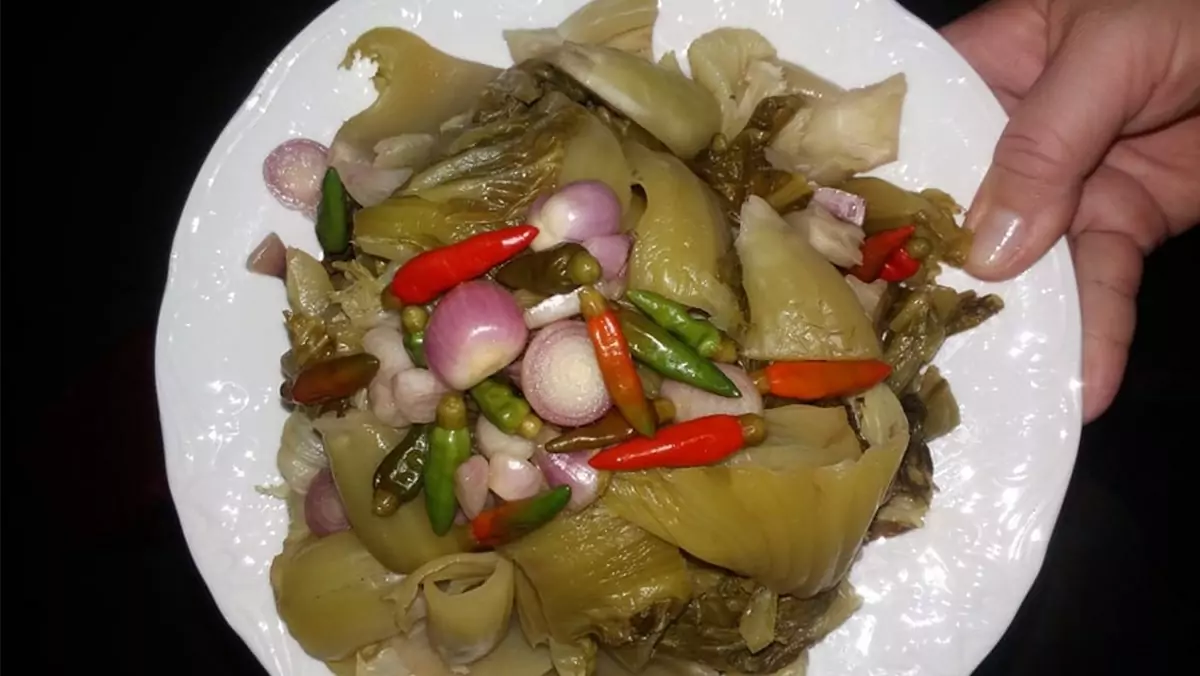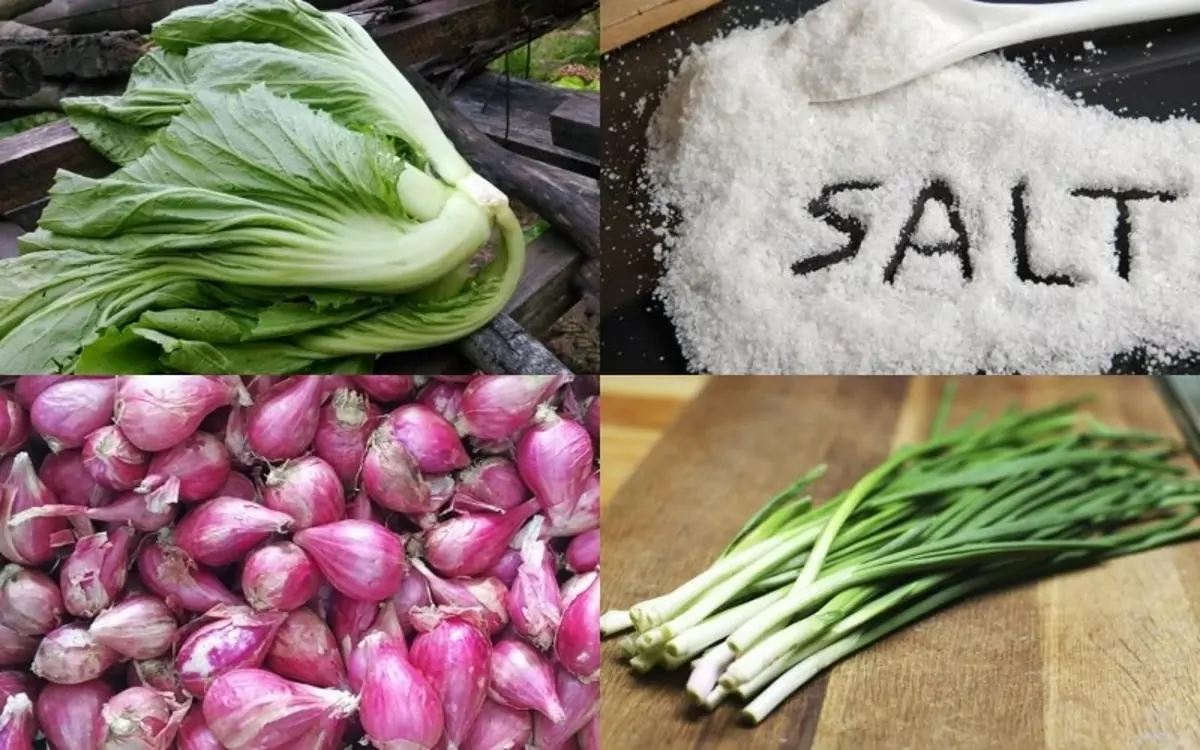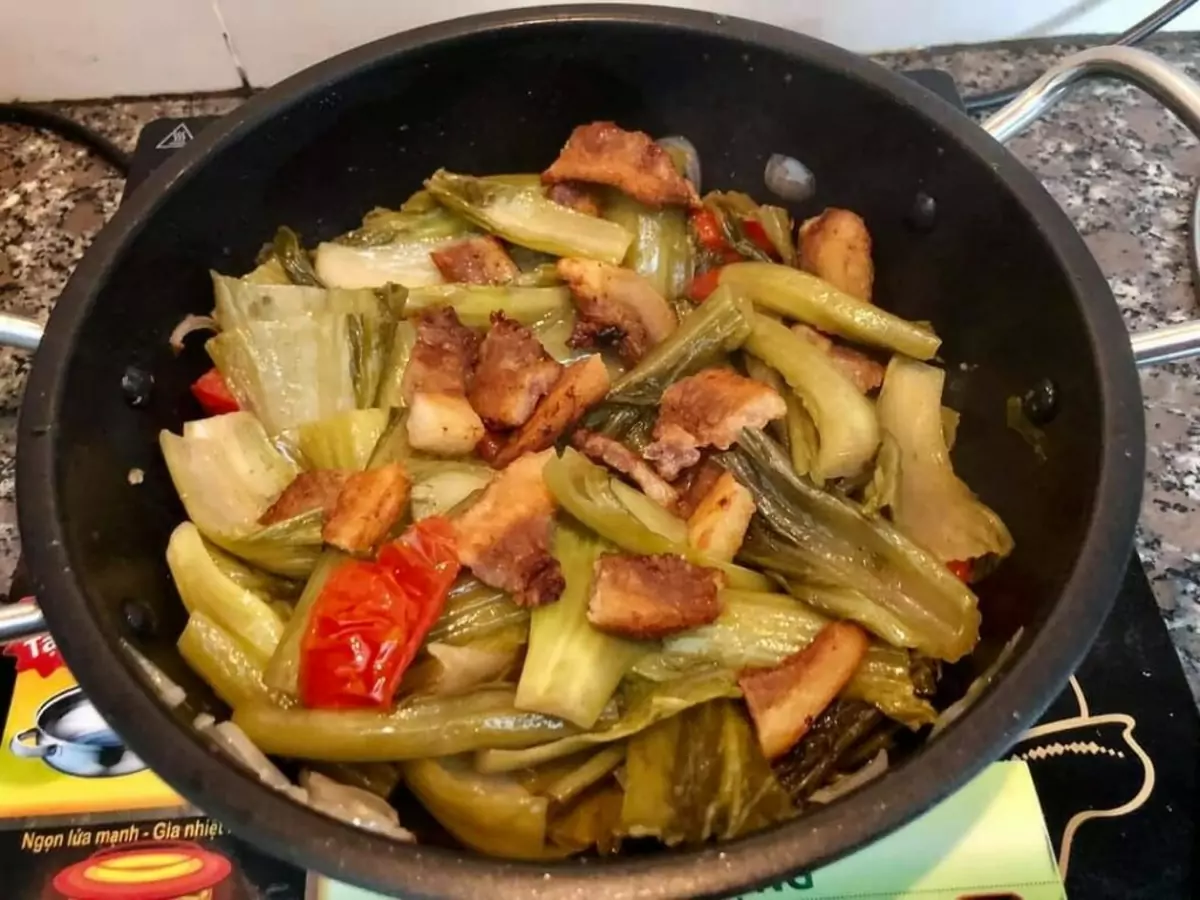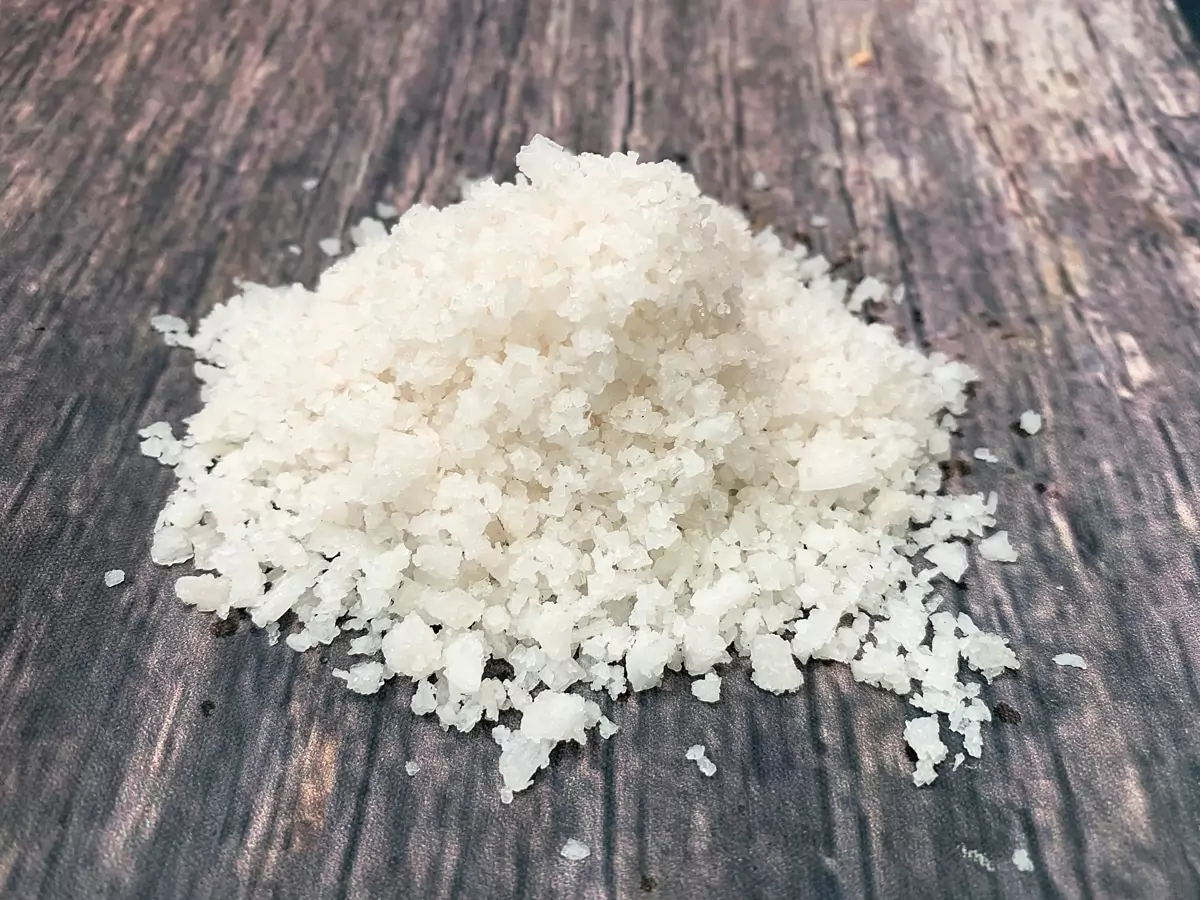Pickled mustard greens are one of the sour dishes commonly found in home kitchens. They are used as a side dish in daily meals to balance savory dishes like braised meat. This article will guide you on how to make perfectly flavored pickled vegetables.
Pickled mustard greens are an easy-to-make side dish, but not everyone knows how to do it properly. A successful dish should be crunchy, not overly sour, and free from mold. The following tips will guide you on how to make pickled vegetables with the right amount of crunchiness, enhancing the taste when enjoyed in daily meals.
Health Benefits of Eating Pickled Vegetables
Instead of buying pickles from shops that may not ensure food safety, you can easily make them at home without spending too much time and money. Eating pickled mustard greens in moderation can offer several health benefits, such as:
- Improving digestion: A large amount of good bacteria in pickled mustard greens plays an important role in gut health. These healthy bacteria break down indigestible cellulose and natural sugars in food during the fermentation process. Good bacteria help keep the pickles safe, reduce spoilage, and increase healthy bacteria in the gut.
- Helping the body fight diseases: The antioxidants in pickled mustard greens help reduce the risk of death from heart disease, cancer, stroke, respiratory-related illnesses, and many other diseases.
- Reducing cramps: According to some studies, drinking pickle juice after exercising helps quickly replenish electrolytes.
- Limiting sudden spikes in blood sugar, which is beneficial for individuals at risk of diabetes.
- Providing essential minerals and vitamins such as A, K, C, folic acid, calcium, iron, and potassium. These are important compounds that help build immunity, protect the body from diseases, improve vision, strengthen muscles and bones, support anemia treatment, and enhance bodily functions.

Ingredients Needed to Make Pickled Mustard Greens
Prepare the following ingredients to make pickled vegetables for 5 people:
- 1 kg mustard greens
- 60 g salt
- 20 g sugar
- 5 shallots
- 100 g green onions
- 5 chili peppers
- 3 teaspoons vinegar
Detailed Instructions on How to Make Pickled Vegetables
Prepare the Ingredients:
- Separate the mustard greens into individual stalks, discarding any damaged or bad leaves.
- Leave the mustard greens to dry in the sun for one day until they wilt slightly. This method also helps the pickled greens turn yellow and become crunchier after pickling.
- Rinse the greens thoroughly with water, cut them into pieces about 5 cm long, and let them drain.
- Peel and wash the shallots.
- Wash the green onions and cut them into pieces about 5 cm long.

Pickling the Mustard Greens
- Dissolve 20 g of sugar and 60 g of coarse salt with 3 teaspoons of vinegar in 1 liter of boiled water, then let it cool to 60 degrees Celsius.
- Arrange the mustard greens pieces in a jar, pour the warm water mixture over them, and add green onions, shallots, and a few fresh chili peppers to the jar.
- Use bamboo sticks to press down on the greens so that they are completely submerged in the liquid.
- Seal the jar tightly and place it in a cool, ventilated area for 2-3 days until the color of the greens turns yellow, indicating they are pickled and ready to eat.
Finished Product
The pickled mustard greens, once completed, will have a sweet and sour taste and a crunchy yellow color. You can enjoy pickled mustard greens with boiled meat, traditional Tet cakes like bánh tét and bánh chưng, or use them as an ingredient in sour soup, stir-fried dishes, or braised fish, all of which are delicious and complement rice well.

Tips for Making Delicious and Long-Lasting Pickled Mustard Greens
The quality of pickled mustard greens largely depends on the preparation process. Here are some tips to ensure a tasty final product and longer shelf life:
- Pay attention to the right amount of sugar and salt. Too little salt will prevent fermentation, while too much salt or sugar can make the pickles overly salty or sweet, which can be unappetizing.
- Use coarse salt instead of iodized salt to prevent the pickles from developing a film. If coarse salt is unavailable, you can substitute it with fine salt.
- Opt for cane sugar or yellow sugar when preparing the pickling brine to enhance the flavor and appearance of the pickled greens.
- Boil the pickling brine until it reaches a rolling boil, which means continuing to boil for about 3-5 minutes after it first starts to boil, then allow it to cool naturally. This helps prevent the pickles from spoiling quickly or becoming too soft, which would affect their taste.
- Choose a glass jar for pickling instead of plastic or metal containers to avoid the release of harmful substances that could affect health. The jar should be thoroughly cleaned with saltwater and sun-dried completely before use; do not pack the mustard greens into a damp jar.
- When serving, use clean utensils to remove individual slices of pickles rather than stirring them, as this can create white foam and cause the pickles to spoil quickly.
- If you don’t finish the pickles, you can store the jar in the refrigerator. This method helps slow down the fermentation process.

Important Considerations When Eating Pickled Mustard Greens
Consuming pickled mustard greens can have negative health effects if you are unaware of the following:
- If the ingredients used to prepare pickled mustard greens are not clean and contain nitrates, pesticide residues, heavy metals, harmful bacteria, or parasite eggs, they can cause poisoning. Use clean utensils for pickling and avoid plastic containers to prevent harmful substances from leaching into the greens during the pickling process.
- When eating pickled greens, gastric juices can act as a solvent for nitric acid to interact with protein-rich foods such as fish, meat, crab, shrimp, fermented sauces, and eggs, forming carcinogenic nitrosamines. To limit the formation of these compounds, avoid eating pickles that are still green, have a pungent smell, or are spoiled.
- Patients with high blood pressure, heart, kidney, liver issues, or stomach ulcers should avoid consuming pickled mustard greens, as they contain high digestive enzyme levels and salt, which may pose a risk of adverse complications.
We hope these tips help you make delicious, crunchy, and spicy pickled mustard greens without developing a film. Visit Foodvietnamese.com for more recipes and tips on authentic Vietnamese cuisine!
